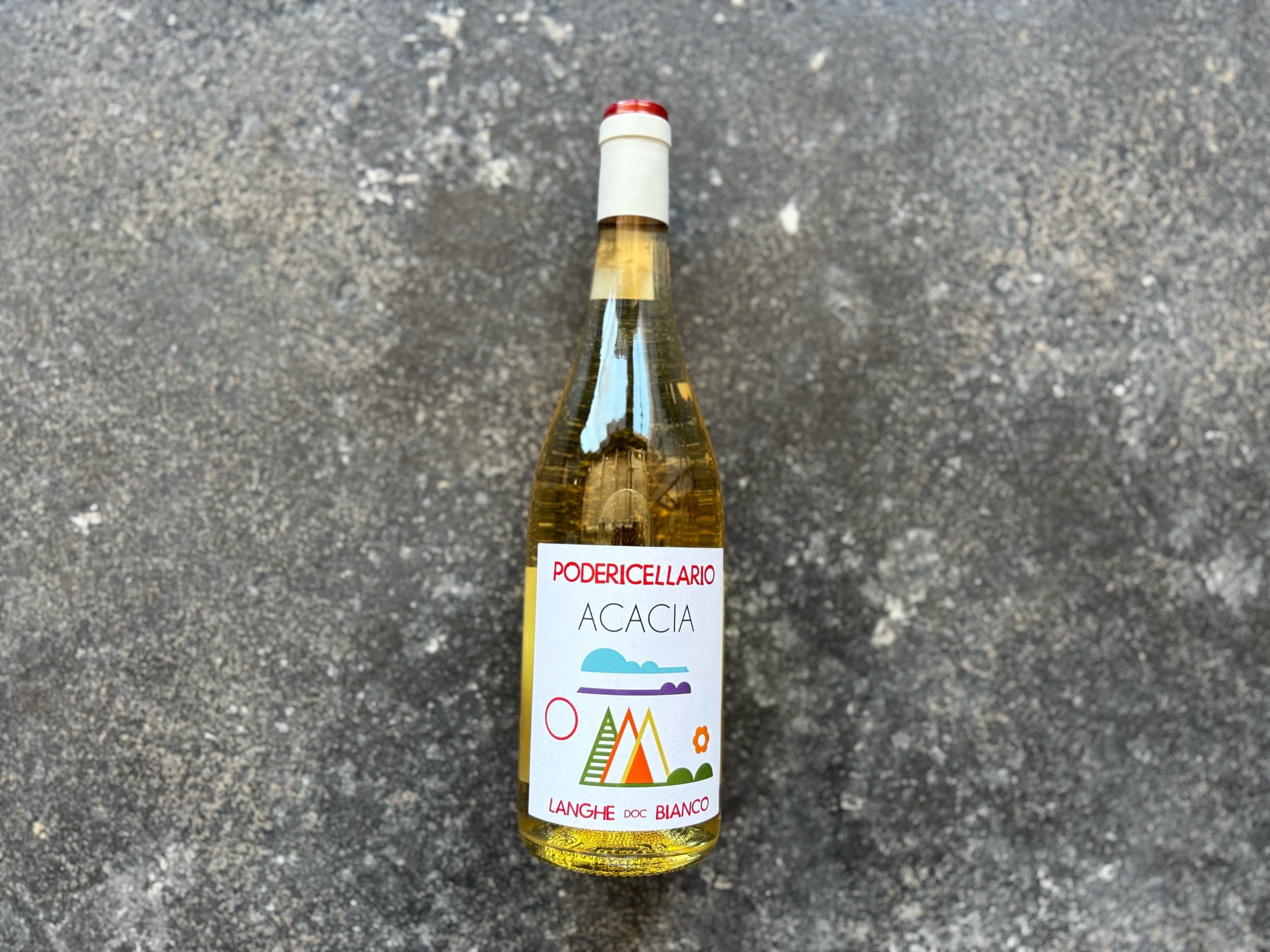 Image 1 of
Image 1 of


Cellario ‘Acacia’ Bianco 2024
Location: Italy, Piedmont
Winemaker: Fausto & Cinzia Cellario
Grapes: Timorasso and Rossese Bianco
Winemaking: Organic farming. Both direct press. Aged in Acacia barrels for 6-8 months before bottling. Timorasso is a “lost” grape variety native to Piemonte that has been rediscovered in recent years, and the super rare Rossese Bianco was native to the Cinque Terre area of Liguria up until the Phylloxera outbreak, which just about wiped it out. A man moved from there to Monforte back then and brought it with him, hence why there is a smattering of it in the Langhe.
From the Importer SelectioNaturel: Fausto and Cinzia Cellario are 3rd generation winemakers in the village of Carru` on the western outskirts of the Langhe. The family believes in only working with local, indigenous Piemontese grape varieties and fiercely defends local winemaking traditions both in the vineyard work and the cellar practices. The Cellario vineyard holdings cover some 30 ha between 5 different vineyard sites covering the southern Langhe. With holdings in Novello and Monforte, the Dogliani plot is arguably the family’s most prestigious land and I would consider them Dolcetto specialists. Vineyard work is organic (soon to be certified) and all the fermentation take place with indigenous yeasts. Sulfur is only added in tiny quantities at bottling if necessary (a practice not common with a winery in this mid-size range).
Location: Italy, Piedmont
Winemaker: Fausto & Cinzia Cellario
Grapes: Timorasso and Rossese Bianco
Winemaking: Organic farming. Both direct press. Aged in Acacia barrels for 6-8 months before bottling. Timorasso is a “lost” grape variety native to Piemonte that has been rediscovered in recent years, and the super rare Rossese Bianco was native to the Cinque Terre area of Liguria up until the Phylloxera outbreak, which just about wiped it out. A man moved from there to Monforte back then and brought it with him, hence why there is a smattering of it in the Langhe.
From the Importer SelectioNaturel: Fausto and Cinzia Cellario are 3rd generation winemakers in the village of Carru` on the western outskirts of the Langhe. The family believes in only working with local, indigenous Piemontese grape varieties and fiercely defends local winemaking traditions both in the vineyard work and the cellar practices. The Cellario vineyard holdings cover some 30 ha between 5 different vineyard sites covering the southern Langhe. With holdings in Novello and Monforte, the Dogliani plot is arguably the family’s most prestigious land and I would consider them Dolcetto specialists. Vineyard work is organic (soon to be certified) and all the fermentation take place with indigenous yeasts. Sulfur is only added in tiny quantities at bottling if necessary (a practice not common with a winery in this mid-size range).
Location: Italy, Piedmont
Winemaker: Fausto & Cinzia Cellario
Grapes: Timorasso and Rossese Bianco
Winemaking: Organic farming. Both direct press. Aged in Acacia barrels for 6-8 months before bottling. Timorasso is a “lost” grape variety native to Piemonte that has been rediscovered in recent years, and the super rare Rossese Bianco was native to the Cinque Terre area of Liguria up until the Phylloxera outbreak, which just about wiped it out. A man moved from there to Monforte back then and brought it with him, hence why there is a smattering of it in the Langhe.
From the Importer SelectioNaturel: Fausto and Cinzia Cellario are 3rd generation winemakers in the village of Carru` on the western outskirts of the Langhe. The family believes in only working with local, indigenous Piemontese grape varieties and fiercely defends local winemaking traditions both in the vineyard work and the cellar practices. The Cellario vineyard holdings cover some 30 ha between 5 different vineyard sites covering the southern Langhe. With holdings in Novello and Monforte, the Dogliani plot is arguably the family’s most prestigious land and I would consider them Dolcetto specialists. Vineyard work is organic (soon to be certified) and all the fermentation take place with indigenous yeasts. Sulfur is only added in tiny quantities at bottling if necessary (a practice not common with a winery in this mid-size range).
